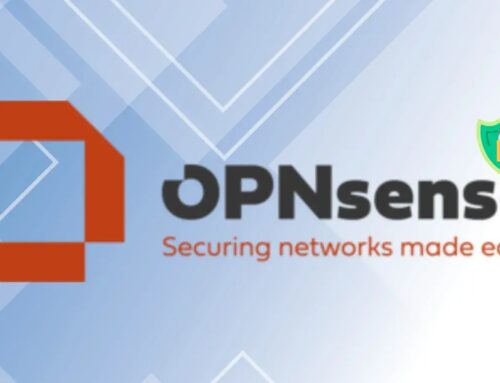
Workday Confirms Data Breach – Hackers Accessed Customers Data and Case Information
In an increasingly interconnected digital landscape, the security of enterprise data is paramount. News has recently surfaced that Workday, a leading provider of enterprise cloud applications for finance and human resources, has confirmed a data breach. This incident, while originating from a third-party application, underscores the critical importance of supply chain security and vigilance in managing connected services. For IT professionals, security analysts, and developers, understanding the vectors and implications of such breaches is crucial for shoring up their own organizational defenses.
Understanding the Workday Data Breach
Workday’s recent data breach stemmed not from a direct compromise of its core infrastructure, but from a security incident involving a third-party application. Specifically, the breach originated through Salesloft’s Drift application, which is commonly used to connect with Salesforce environments. This highlights a recurring theme in modern cybersecurity incidents: the extended attack surface created by legitimate, interconnected business applications.
On August 23, 2025, Workday became aware of the security issue. Their immediate response was decisive: they disconnected the compromised app, invalidated its access tokens, and launched a comprehensive investigation. While the full extent of the compromised customer information and case data is still under investigation, the early confirmation from Workday signals a proactive approach to transparency, which is vital for maintaining trust with their extensive customer base.
The Role of Third-Party Integrations and Supply Chain Risk
This incident serves as a stark reminder of the inherent risks associated with third-party software integrations. Enterprise environments rarely operate in isolation; they are complex ecosystems of applications, APIs, and services provided by numerous vendors. When a third-party application like Salesloft’s Drift, intended to enhance functionality and connectivity, becomes a point of compromise, it creates a cascade effect.
- Extended Attack Surface: Every integration point represents a potential vulnerability. Organizations must rigorously vet not only primary vendors but also the security posture of their integrated applications.
- Access Permissions: Third-party apps often require significant access to sensitive data and systems to function effectively. Misconfigured permissions or vulnerabilities within these apps can be exploited to gain unauthorized access to an organization’s core data.
- Shared Responsibility: While cloud providers like Workday invest heavily in their own security, customers still bear responsibility for how they configure and manage access to their data, especially through integrated services.
Implications for Customers and Industry Professionals
For organizations utilizing Workday services, and by extension, any interconnected enterprise software, this breach prompts several immediate considerations:
- Data Exposure: Customers whose data or case information was handled through the compromised Salesloft Drift application may have had their information accessed by unauthorized parties. Workday’s ongoing investigation will be crucial in determining the specific impact.
- Trust and Compliance: Data breaches can erode customer trust and trigger regulatory scrutiny, potentially leading to significant financial and reputational damage. Compliance frameworks often mandate stringent third-party risk management.
- Proactive Security Measures: This incident reinforces the need for robust third-party risk management programs, including regular security assessments, access reviews, and incident response planning for integrated services.
Remediation and Proactive Security Actions
While Workday took swift action by disconnecting the app and invalidating tokens, broader proactive measures are essential for any organization to mitigate similar risks. There isn’t a specific CVE associated with this incident at the time of writing, as it appears to be an exploitation of an existing connection rather than a newly discovered software vulnerability.
- Comprehensive Vendor Risk Management (VRM): Implement a rigorous VRM program that includes security questionnaires, periodic audits, and continuous monitoring of third-party vendors and their applications. Assess their incident response plans and data handling practices.
- Principle of Least Privilege: Ensure that third-party applications are granted only the minimum necessary permissions to perform their intended function. Regularly review and revoke unnecessary access.
- API Security and Monitoring: For applications that interact via APIs, implement robust API security practices, including authentication, authorization, rate limiting, and continuous monitoring for anomalous behavior.
- Identity and Access Management (IAM): Strengthen IAM policies across all integrated systems. Implement Multi-Factor Authentication (MFA) for all users, especially those with access to sensitive data or administrative privileges.
- Incident Response Planning: Develop and regularly test an incident response plan that specifically addresses third-party breaches. This plan should include communication protocols, data exfiltration detection, and recovery strategies.
- Employee Training: Educate employees on the risks associated with third-party applications, phishing attempts, and the importance of reporting suspicious activity.
Tools for Third-Party Risk Management and Security Visibility
| Tool Name | Purpose | Link |
|---|---|---|
| Bitsight | Security Rating Service for third-party risk assessment | https://www.bitsight.com/ |
| RiskRecon (a Mastercard company) | Continuously monitors third-party security posture | https://riskrecon.com/ |
| OneTrust Vendorpedia | Vendor risk management and GRC platform | https://onetrust.com/products/vendor-pedia/ |
| Okta (or similar IdP) | Identity and Access Management (IAM) for controlled access | https://www.okta.com/ |
| Datadog (or similar APM/Observability) | API monitoring and application performance management | https://www.datadoghq.com/ |
Conclusion
The Workday data breach, originating from a third-party application, serves as a powerful reminder that enterprise security is a collective endeavor. It extends beyond an organization’s perimeter to encompass every vendor, every integration, and every line of code that interacts with its critical systems. For IT professionals and security practitioners, this incident reinforces the imperative for robust third-party risk management, diligent access control, and a proactive stance on incident response. As interconnectedness grows, so too does the need for a comprehensive and adaptive security strategy that accounts for every link in the digital supply chain.





